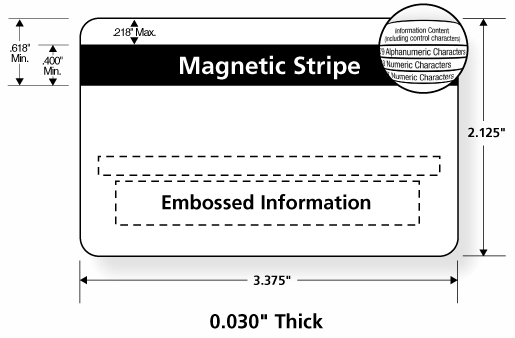Technical Specifications of a Credit Card?

The size of most credit cards is 85.60 mm × 53.98 mm (3.375 in × 2.125 in) and rounded corners with a radius of 2.88–3.48 mm, conforming to the ISO/IEC 7810 ID-1 standard, the same size as ATM cards and other payment cards, such as debit cards.
Credit cards have a printed or embossed bank card number complying with the ISO/IEC 7812 numbering standard. The card number's prefix, called the Bank Identification Number, is the sequence of digits at the beginning of the number that determine the bank to which a credit card number belongs. This is the first six digits for MasterCard and Visa cards. The next nine digits are the individual account number, and the final digit is a validity check code.
Both of these standards are maintained and further developed by ISO/IEC JTC 1/SC 17/WG 1. Credit cards have a magnetic stripe conforming to the ISO/IEC 7813. Many modern credit cards have a computer chip embedded in them as a security feature.
In addition to the main credit card number, credit cards also carry issue and expiration dates (given to the nearest month), as well as extra codes such as issue numbers and security codes. Not all credit cards have the same sets of extra codes nor do they use the same number of digits.
Credit card numbers were originally embossed to allow easy transfer of the number to charge slips. With the decline of paper slips, some credit cards are no longer embossed and in fact the card number is no longer in the front.
Click Below to Apply for a Credit Card Online




Comments
Post a Comment